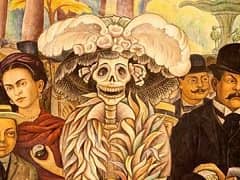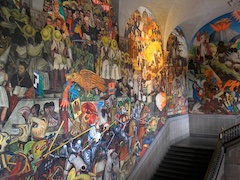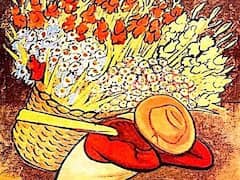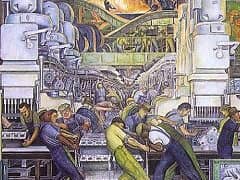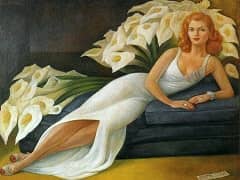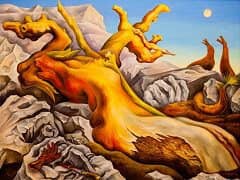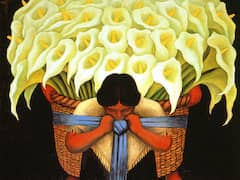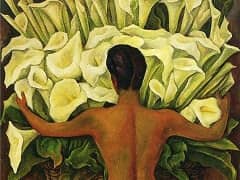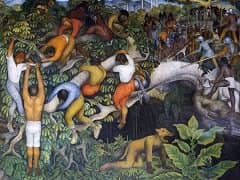The Flower Carrier by Diego Rivera
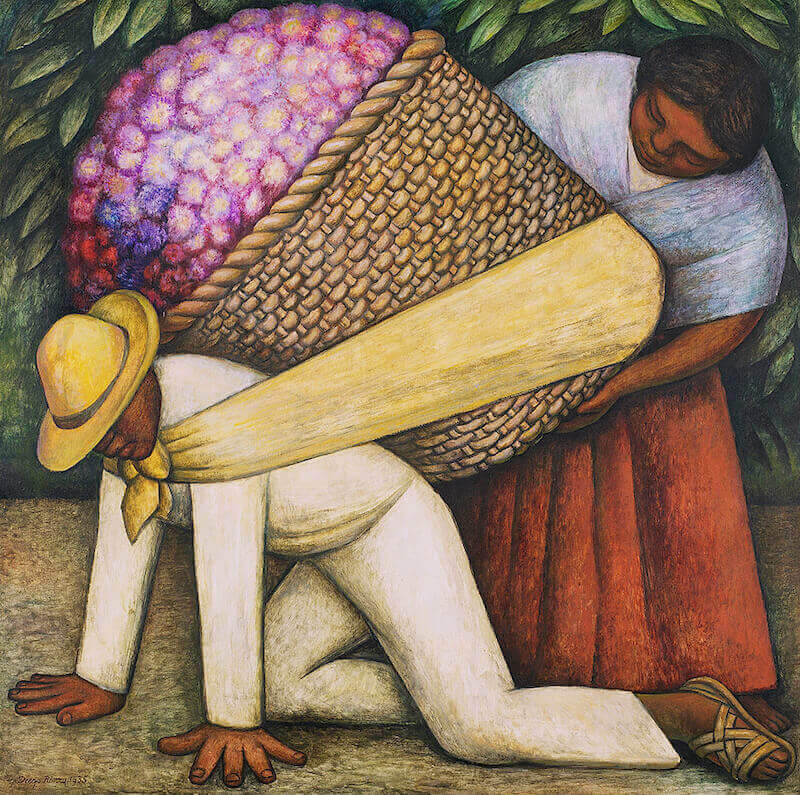
In 1935, Diego Rivera masterfully created The Flower Carrier (known in its original language as Cargador de Flores). Like many of Rivera's paintings, The Flower Carrier imparts simplicity, yet exudes much symbolism and meaning. The paint was rubbed into the masonite, the most common method for painting on hard surfaces. The vibrant colors evoke one of Diego Rivera's favorite artist Vincent van Gogh.
The colorful painting displays a peasant man in white clothing with a yellow sombrero, struggling on all fours with a dramatically oversized basket of flowers that is strapped to his back with a yellow sling. A woman, most likely the peasant's wife, stands behind him trying to help with the support of the basket as he attempts to rise to his feet. While the flowers in the basket are strikingly beautiful to the viewer, the man does not see their beauty, but only their value as he carries them to the market for sale or exchange. The geometric shapes offer bold and intense contrasts, with each figure, item, and foliage illustrated to reflect individualism. Some believe that the enormous basket strapped to the man's back is representative of the encumbrances of an untrained worker in a modern, capitalistic world.
Notice the bold, bright colors he uses. With the use of shadows he makes the subject stand out from the background of the painting almost as if the figures are outlined. How does he repeat the colors? Compare the size of the man to the size of the woman. The man is carrying the heavy load, but he appears to be a smaller person than the woman putting the load on his back.

